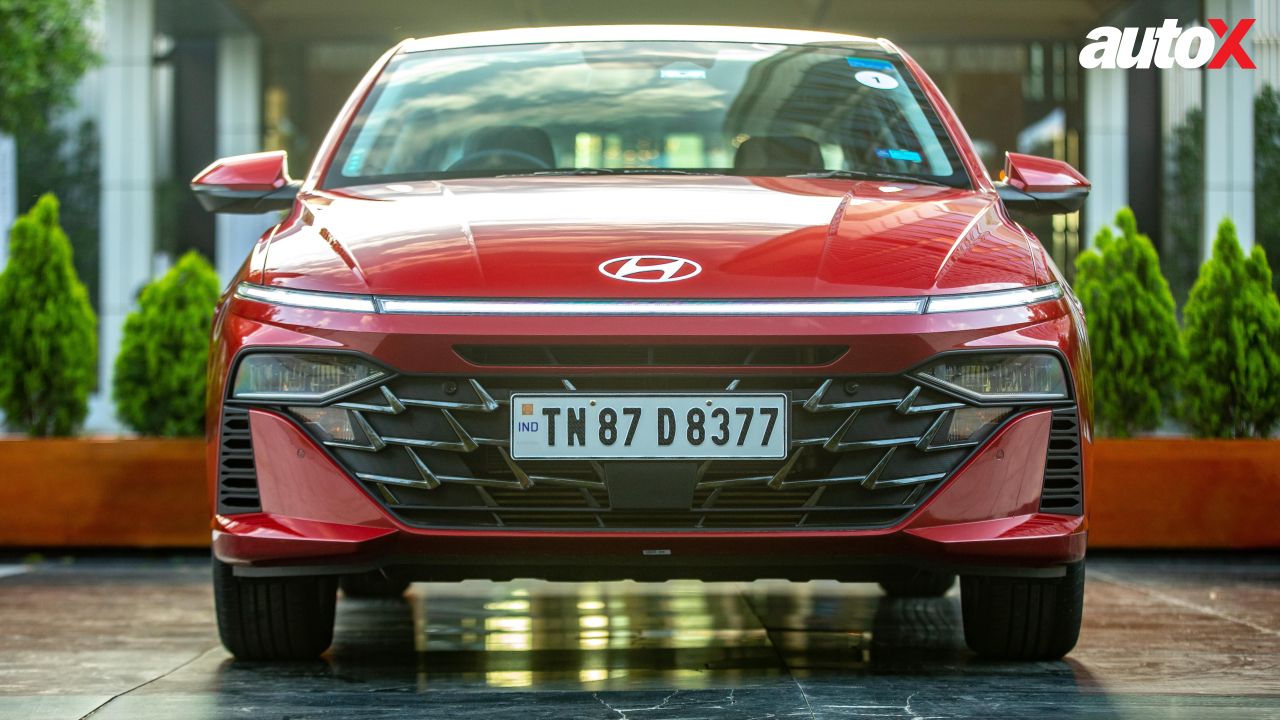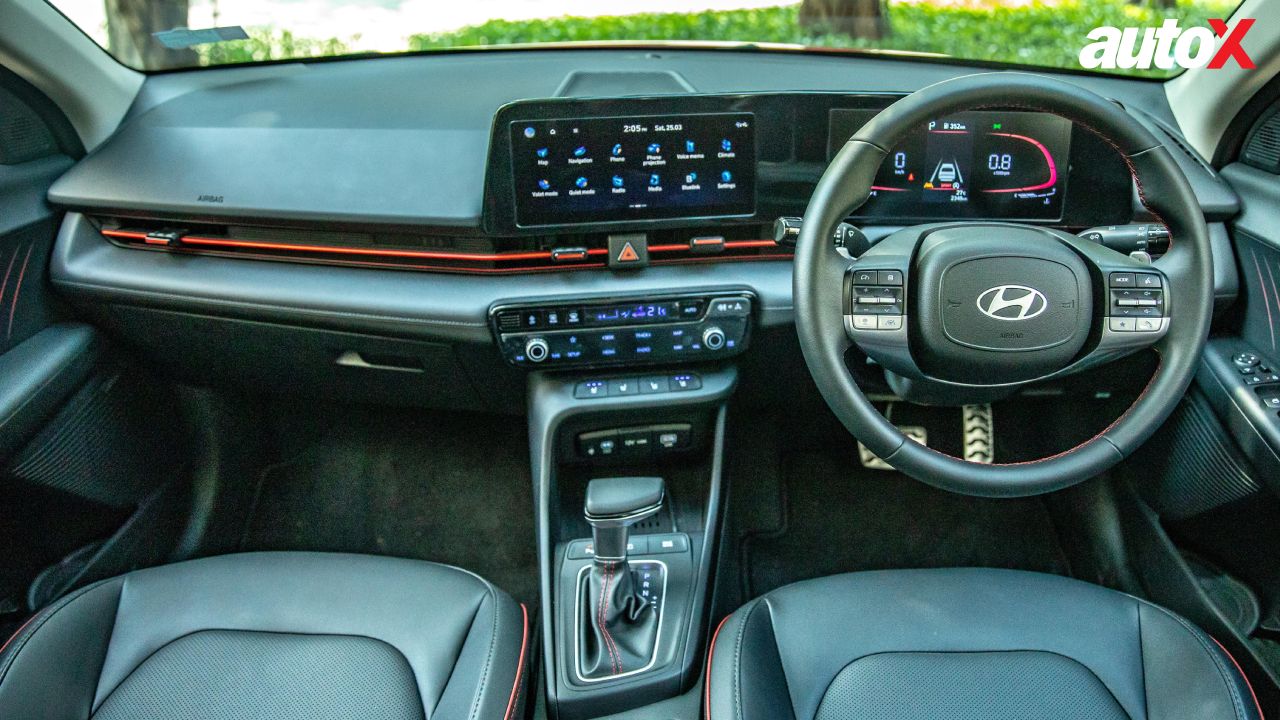
Talking about any sedan these days seems unfair without talking about the sedan segment entirely. And once you do, there is a pattern that emerges and defines what the segment is going through – they are all going big, be it in terms of size, features and arguably, are vying to capture the image of a sedan that belongs to a segment above. Case in point, the City is the biggest it has ever been and almost fulfils the gap that the Civic left behind. The Skoda Slavia and the Volkswagen Virtus have taken things several notches above where the Rapid and Vento used to be. And this is where the all-new Hyundai Verna comes in too. Hyundai calls all these cars mid-large sedans – except for the Maruti Suzuki Ciaz. And they are right, the segment above these cars is virtually non-existent today with the sole flag bearer being the Skoda Octavia. But the question that we will be answering today is whether all these factors make it easy for the new Verna to establish an identity of its own or is it trying to do too many things at the same time and has lost sight of the basics?

2023 Hyundai Verna Review: Design
Let’s start by taking a closer look at the design of the car. The absolute first thing you will notice is the size and presence of the car. This is because the new Verna is now 95mm longer, 36mm wider and has a 70mm longer wheelbase. To give a better idea of what these numbers mean, the Verna is now the widest car amongst its competitors and has the longest wheelbase too. And coupled with this new design, at first glance, you may even think of it as perhaps the new Elantra!
Talking about the design, there is honestly a lot to unpack. The highlight, of course, is the continuous LED strip that runs across the nose of the car. Underneath this striking design element is the new, wider grille that also houses the LED headlamps and gets a dark chrome finish. On the sides, you have 16-inch alloy wheels that in my opinion play it a bit too safe in comparison to the overall edgy design of the car, and bigger 17-inch wheels with a sportier design would have been a welcome addition. They do look smart, though. The door handles and the window belt line is finished in satin chrome but what stands out is the coupe-like roofline which connects seamlessly to the boot. At the back, the bumper gets a similar design treatment to the front grille – Parametric, as Hyundai calls it – and the highlight is the connected LED tail lamps which when turned on, show an intricate design adding a premium touch to the sedan.
Overall, the all-new Verna approaches design with a fresh slate and whether you love it or not, it is something that stands out. In my opinion, it looks fantastic and a lot better when you see it in flesh than in pictures. What we drove for our first drive impressions is the Turbo variant which gets blacked-out alloy wheels with red callipers and the option of dual-tone paint finishes, like the one you see here. Non-turbo variants get silver-finished alloys and single-tine colour options.
2023 Hyundai Verna Review: Interiors and Features
The good bits continue once you step inside the new Verna as well. Again, being the Turbo variant, the interiors come blacked out with red accents and include metal pedals. The non-turbo variants, on the other hand, get a dual-tone cream and black interior. Overall, the design approach to the interior of the all-new Verna is minimalistic. The dashboard is angled towards the driver and the big attraction is the combination of two 10.25-inch displays positioned in a single housing, giving it a continuous look. The Verna comes with an electric sunroof that can also be operated through voice command, it gets 64-colour ambient lighting that extends the entire width of the soft-touch dash and onto the doors, and what is a conversation starter is the new two-spoke steering wheel.
The instrument cluster, although digital, is not very customisable as it is only the center MID that switches between information. The whole console, however, does change colours depending on the chosen driving mode. The touchscreen infotainment system gives a top-notch experience with great touch response with easy-to-use UI and is coupled with an eight-speaker Bose sound system which makes for a great in-car audio experience. Do keep in mind, though, that at the time of our media drives the system did not support wireless Android Auto and wireless Apple CarPlay and needed the phone to be connected through a cable. Hyundai says that a future Over-The-air (OTA) update will bring this feature to the car. There is a smart use of space as Hyundai has integrated the HVAC controls and the infotainment touch controls into a single unit which alters between the two displays with the touch of a button. There are two physical knobs too which switch their functions too. The whole setup takes a bit of time to get used to but once you do, it makes a lot of sense. Hyundai has also neatly placed the seat ventilation and heating controls just beneath it. Note that while the driver seat is electrically adjustable, the height adjustment is still done manually. Other features include a wireless phone charger, keyless entry and go, and automatic headlamps.
The biggest improvement, perhaps as a whole, on the new Verna comes in the form of an increase in space – especially at the back. Despite the Verna not being taller than before, it has managed to scoop out more headroom for the rear passenger thanks to the sloping roofline. The legroom is where the biggest change is felt, however, as it has gone up substantially over the outgoing model. It is now at least at par with the segment, if not the best. The rear passengers also get a manual sunblind over the rear glass panel, and it is a good feature addition. The new Verna also boasts the largest boot space – 528 litres – in the segment.
2023 Hyundai Verna Review: Safety
The Verna also gets a major boost in the safety department. It now gets ABS, EBD and six airbags as standard across all variants. Additionally, it can be had with Electronic Stability Control, Hill Start Assist, front parking sensors, Tyre Pressure Monitoring System and electrochromic inside rearview mirror. The top-spec DCT-equipped variant gets disc brakes on all four wheels and an electronic parking brake. Hyundai is also giving three years of free Bluelink subscription which includes connected features like SOS calls, geo-fencing and auto crash notifications. And lastly, the top-spec SX(O) variant, except for the manual gearbox-equipped versions, also gets radar and front camera-based Advanced Driver Assistance System (ADAS) that adds features like adaptive cruise control with stop and go, lane-keep assist, blind spot assist, forward collision warning and safe exit warning. The Honda City might have offered ADAS first in the segment, but it is the Verna (the Turbo DCT variants, specifically) that gets a more competent setup with front and rear radar modules aiding the camera which should result in better functioning in low-visibility conditions.
Also Read: New-gen Hyundai Verna vs Old Model: A Detailed Comparison
To sum it all up, the new Verna sees a massive improvement in the space, features and safety department. The quality, fit and finish and materials used, all have improved too. Simply put, the Verna now has the best in-car experience in the segment.
2023 Hyundai Verna Review: Driving Experience
The new Hyundai Verna holds a lot of promise. After all, it has the hardware to make it the king of top trumps in the segment. It comes with the choice of two engine options - first is a 1.5-litre, naturally aspirated, 4-cylinder petrol engine that makes 113bhp of power and is available with the choice of a 6-speed manual or an 8-step CVT gearbox. While this is an aptly powerful drivetrain it is the second option that puts the Verna on top of the food chain – a 1.5-litre, turbocharged, 4-cylinder petrol engine that makes 158 bhp of power available with the choice of a 6-speed manual gearbox or a 7-speed dual-clutch transmission, making it the most powerful sedan in the segment. Now, there are some interesting choices to note here. Hyundai is no longer offering a diesel engine option and there is no hybrid powertrain either. And, the turbo-petrol engine is the new 1.5-litre unit that is replacing the older 1.4-litre turbo units in the likes of the Creta. And lastly, the turbo petrol engine is coming with a proper manual gearbox and not the two-pedal iMT system – something that enthusiasts will appreciate.
We drove the turbo variant with the DCT gearbox and the takeaway is that the drivetrain is smooth and refined. The performance is not a gut-wrenching one but instead, is delivered linearly. So it does not feel “quick” right away but it is no doubt a fast car. The DCT is well-tuned for both relaxed as well as spirited driving.
Also Read: 2023 Hyundai Verna vs Skoda Slavia: Price, Features, Specs, and More
The ride quality has matured too. What stands out is that it does not go all the way in search of performance that it compromises everyday comfort. It is a happy balance between a soft setup meant to deal with potholes and a stiff setup for corner carving. Same with the steering too which has become a bit stiffer than before. However, the feedback is not its strongest point and honestly, that is okay. In my books, this balance works best in everyday road and driving conditions as it is not always that you want to be a hoon. And yet, given the punch that it packs, it does not leave you wanting more.
2023 Hyundai Verna Review: Verdict
Overall – I’ll keep it short – Hyundai has knocked it out of the park with the new Verna that strikes the perfect balance between sportiness and comfort. They have nailed the formula for making a car that excels well enough in every department that as a whole, it becomes the most convincing package for your money.
- Hyundai Verna
Fuel: Petrol
Engine: 1,482cc / In-Line 4-Cylinder / Turbocharged
Transmission: 7-Speed DCT / Front-Wheel Drive
Power: 158bhp @ 5,500rpm
Torque: 253Nm @ 1,500-3,500rpm
Price: ₹10.90 - 17.38 Lakh (Ex-Showroom)
X-Factor: Perfect balance of features, comfort and performance.
| Pros | Cons |





























Write your Comment